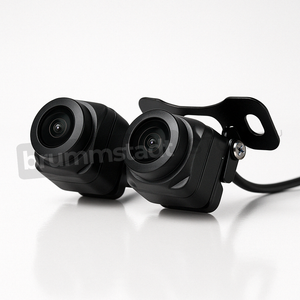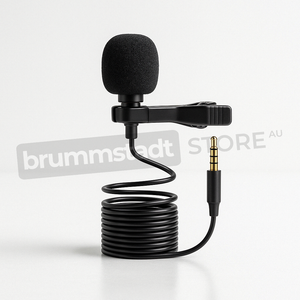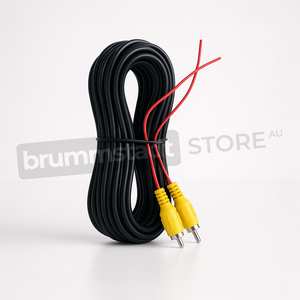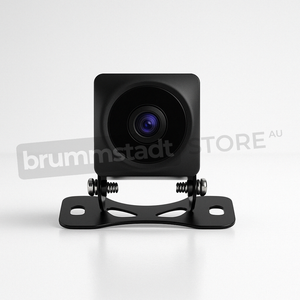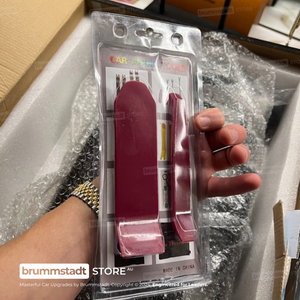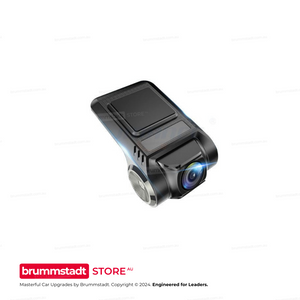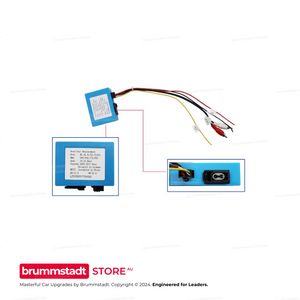Frequently Asked Questions
Everything you need to know about this head unit
Connect the single RCA cable with the yellow plug (included in your package) to extend your Bluetooth signal. This cable doubles as both a camera input AND a Bluetooth/WiFi antenna extension. The two small blue wires attached are antenna boosters that significantly improve connection stability. This simple connection takes 30 seconds and resolves 90% of Bluetooth issues. Make sure it's firmly connected even if you're not using a rear camera.
Try these proven solutions:
1. Quick Fix: Settings → Apps → Z-Link → Disable → Enable → Open (repeat each use)
2. Check Cables: Use the data/charge USB cable (not charge-only)
3. Bluetooth Setting: Disconnect all other Bluetooth connections - CarPlay needs exclusive access
4. Factory Reset Z-Link: Find the pink 'RESET' app, restart, reconnect Bluetooth, then try Z-Link
5. Sound Issues: Switch audio source to 'AUX' or 'USB/AUX' in your vehicle menu
Most issues are resolved with step 1 or 3!
The processor differs between models: The 2/32GB has a 4-Core processor, while 4/64GB and 8/128GB models feature the powerful 8-Core Cortex-A55 processor. Combined with RAM differences: The 2/32GB model with its 4-Core processor and limited RAM may experience slowdowns with heavy multitasking. The 4/64GB with 8-Core provides smooth performance for most users - no lag, seamless app switching, and enough storage for maps and music. The 8/128GB with 8-Core offers maximum performance with its generous RAM allowing unlimited multitasking and massive storage for extensive media libraries. Think of RAM like your desk space - more RAM means you can have more apps open simultaneously without slowing down.
Absolutely normal! These head units are complete replacement systems with their own GPS antenna, microphone, and Bluetooth module. Your factory connectors for these features won't be needed anymore. The important connections are: main power harness, speaker outputs, and the yellow RCA cable (even if not using a camera - it extends Bluetooth range). Any leftover factory plugs can be safely tucked away. If you're unsure about any connection, our support team is here 7 days a week.
Z-Link updates are handled through system firmware updates. Go to Settings → System → System Update. If an update is available, download it to a USB drive (FAT32 format) and install. Important: Never download Z-Link APKs from unofficial sources - they won't work and may cause issues. If you're having compatibility issues with newer iOS versions, the disable/enable workaround (Settings → Apps → Z-Link) usually resolves them while waiting for official updates.
Consider your usage:
• 2/32GB (4-Core): Budget option - fine for basic use, but may lag with multiple apps due to 4-Core processor and limited RAM
• 4/64GB (8-Core): Sweet spot - smooth Android Auto/CarPlay, multitasking, and ample storage
• 8/128GB (8-Core): Premium choice - unlimited multitasking, massive storage, future-proof for years
Most customers choose 4/64GB for the perfect balance of performance and value. The extra RAM makes a huge difference in daily smoothness!
The yellow RCA cable's blue antenna wires also boost WiFi signal! Make sure this cable is connected. Additionally, try these tips: Position the blue antenna wires away from metal surfaces, check that your phone's hotspot is set to 2.4GHz (not 5GHz) for better range, and ensure the head unit's WiFi sleep policy is set to 'Never' in Settings → WiFi → Advanced. For best performance with wireless CarPlay, keep your phone within 1-2 meters of the head unit.
Go to Settings → Sound → Equalizer and adjust to your preference. For more volume, increase the 'Loudness' setting. The 4/64GB and 8/128GB models have superior audio chips that provide cleaner, louder sound. If you have an amplifier, use the RCA outputs for best quality. Also check Settings → Factory Settings (password usually 126) → Audio settings for additional gain controls. Remember: higher-spec models (4GB+) include premium audio components for noticeably better sound.
Yes! Most vehicles work instantly. If not, use the steering wheel learning app: tap the steering wheel icon, press each button on your wheel, and assign functions. For newer vehicles with CANbus, we provide CANbus modules for automatic setup. Some vehicles may need the Key1/Key2 wires connected (usually included in our harness). If you're having trouble, let us know your exact vehicle model and we'll provide specific instructions.
We offer a 30-day return policy. If it doesn't fit or there's a compatibility issue, we'll work with you to resolve it. If you change your mind, a 20% restocking fee applies. Our team verifies compatibility before shipping to minimize issues. We provide installation support 7 days a week to help resolve any problems. With our 3-year warranty and Australian-based support, you can purchase with confidence. Full details in our Refund Policy.
Historical Context and Model Evolution of the Volkswagen Crafter:
1995-2006: Volkswagen LT Second Generation (Predecessor of the Crafter)
Before being named Crafter, Volkswagen's primary large van was branded as the "Volkswagen LT". Introduced in 1995, the second generation LT demonstrated significant practical enhancements and modern refinery over previous offerings. Widely appreciated for reliable engines, robust construction, and functional simplicity, the LT became a familiar sight on European roads, excelling in versatility—from delivery vans and minibuses to bespoke conversions such as ambulances and recreational vehicles. Its diesel engines, particularly the robust TDI range, earned the trust of business and private users alike.
2006-2016: First-Generation Volkswagen Crafter
Evolving out of the LT's platform, the first generation Crafter emerged as Volkswagen's definitive large-sized commercial van, sharing a production line and basic architecture with the Mercedes-Benz Sprinter under an agreement between the two automakers. Yet, despite their similar underpinnings, each brand established distinct identities; Volkswagen focusing on durability, ride comfort, ergonomic interior appointments, and comprehensive payload capacities. Available with varying wheelbases, roof heights, and numerous practical configurations, the Crafter suited diverse practical demands. Users across Europe, Australia, and parts of Asia consistently praised the Crafter for dependability, vast cargo capacities, and a cabin emphasizing driver comfort.
2017-2021: Second-Generation Volkswagen Crafter (Independent Evolution)
With the Crafter model entering its second generation in 2017, Volkswagen departed from platform-sharing practices. This Crafter became a wholly Volkswagen-designed offering, tailored meticulously to customer feedback, market demands, and engineering innovation. Volkswagen initiated independent production in a newly constructed facility in Września, Poland, showcasing dedicated efforts to build a large van that precisely meets modern users' functional requirements.
The second-generation Crafter unveiled a modernized exterior, sleeker with aerodynamic contours, fresh yet instantly recognizable styling faithful to Volkswagen's design language. Significant effort was invested in practicalities—including reduced interior noise, improved efficiency, expanded interior and cargo compartment dimensions, innovative assistance systems, and more ergonomic interior appointments. Volkswagen's advanced range of enjoyable and fuel-efficient diesel powertrains—such as the TDI turbodiesel lineup—proved reliable and suited specifically to hauling and long-distance travel needs. With leading payload ratings and considerable towing capabilities, the Crafter swiftly emerged as a benchmark within its segment.
Volkswagen Crafter Naming and Global Variations:
While globally recognized under the Crafter name, initially, in some markets—especially in South Africa and Australia—it had secured a strong position among tradespeople and delivery companies as a trustworthy large-scale commercial van. Each global market received slight configuration and trim differences, reflecting regional uses, regulatory expectations, and customer preferences.
Integrating Advanced Technology into the Volkswagen Crafter Driving Experience:
Though well-regarded, even established vehicles like the Crafter benefit from dedicated advanced technology additions, particularly in infotainment systems. Recognizing this opportunity, brands such as Brummstadt offer premium head unit selections compatible specifically with the Volkswagen Crafter models from 2017 to 2021.
These meticulously selected premium head units markedly transform daily usability and driving convenience, presenting drivers with up-to-date multimedia and connectivity options that blend seamlessly into the original vehicle interior. Thoughtfully constructed, these units integrate wired and wireless Apple CarPlay and Android Auto functionality, aligning perfectly with modern demands for smartphone connectivity. Essential navigation elements including compatibility with Google Maps, Apple Maps, and WAZE allow accurate and regularly updated instruction for users, ensuring timely and reliable commuting or transport tasks.
Envision a common occurrence: after sharing dinner with family at a local restaurant, the next destination—a friend's home—is strategically entered within a smartphone navigation app before even stepping into the vehicle. Upon boarding the Crafter, these navigation instructions transfer automatically via wireless Apple CarPlay or Android Auto, immediately visible on the head unit screen and offering seamless, stress-free transition from social engagement to transport.
Additional useful offerings include potential expansion with high-quality 1080p HD front and rear camera systems capable of continuous recording, presenting enhanced visibility, better maneuvering safety in restricted or difficult locations, and vital evidential video records should unexpected circumstances arise. Further extending beyond practicality alone, integrated USB ports effortlessly facilitate connection of gaming controllers, allowing passengers opportunities to share entertaining multiplayer moments during lengthy road trips or work journeys, reinforcing interpersonal connectivity even within routine daily travels.
Additionally, smart voice assistance integration through popular voice systems like Siri or Google Assistant empowers users with simplified task management and flexible voice-activated control. This proactive system permits drivers effortless communication management, navigation instructions, media playback control, or even interaction with home-connected smart technology such as activating porch lighting remotely ahead of arrival—a means of harmonizing vehicle and domestic technology integration for convenience and enhanced safety.
The Overall Advantages and Driving Experience of the Volkswagen Crafter (2017-2021):
The second-generation Volkswagen Crafter successfully balances vital core attributes—reliability, practicality, cargo versatility, and efficient engine performance—with noticeable refinements, premium cabin construction, contemporary appearance, and top-tier driving assistance technologies. Carefully addressed user requirements allow Crafter variants without compromise—reliably undertaking commercial challenges, comfortably accommodating extended time behind the wheel, or flexibly adapting to custom conversions including campervans or mobile offices.
Moreover, adding thoughtfully selected modern infotainment and safety upgrade systems — such as Brummstadt's compatible premium head unit—further improves overall drive experience satisfaction. Including features such as convenient navigation, extensive multimedia access, advanced safety improvements via high-definition camera systems, and creative solutions such as passenger gaming possibilities or intelligently integrated smart voice control all combine effectively. Through modernized yet purposefully designed technological advancements, journeys within Volkswagen Crafter models gently transition into genuinely enjoyable, reassuring connectivity-enhanced experiences rather than merely mundane transport tasks.
The 2017-2021 Volkswagen Crafter, thus, affirms its significance as a durable, innovative, comfortable, and thoughtfully tailored commercial vehicle that remains perpetually adaptive to evolving user needs, inspirations, and ever-progressing technological possibilities.


















